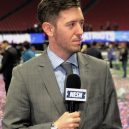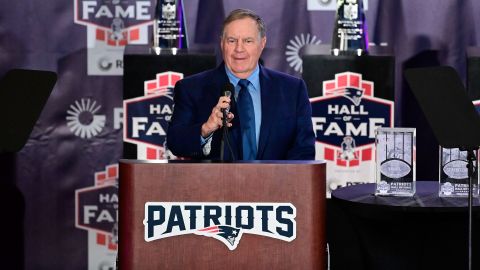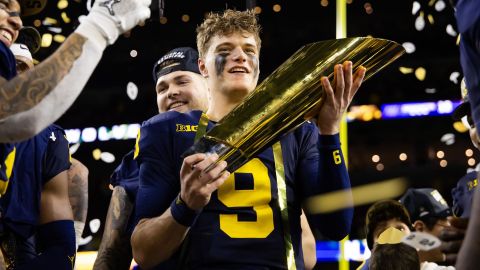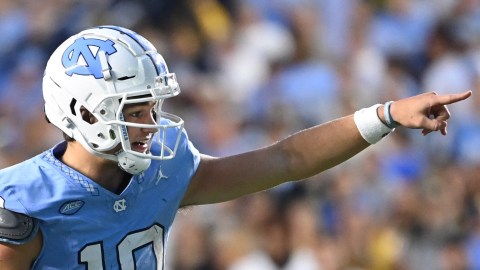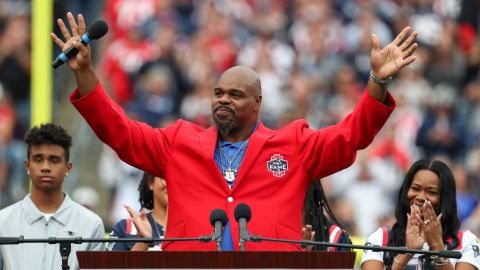 It took six years, but the New England Patriots’ defensive rebuild finally looks complete.
It took six years, but the New England Patriots’ defensive rebuild finally looks complete.
Patriots head coach Bill Belichick has been able to consistently churn out an “elite” offense — thanks in large part to quarterback Tom Brady — that has never experienced a true lull, and they don’t look headed for one in 2014. Belichick hasn’t been so lucky on defense, and while the team continued to have overall success, there were a few years when Patriots defensive backs made every opposing “X” receiver look like Randy Moss in his prime.
The Patriots ranked 25th in total defense in 2010, 31st in 2011, 25th again in 2012 and 26th in 2013. They ranked well in points against in those years, but they failed to pass the eye test.
The last time the Patriots finished top five in offense and defense was 2007, and 2008 marked the last season that defensive mainstays Richard Seymour, Tedy Bruschi and Rodney Harrison suited up in a regular-season game. The Patriots could be headed for “elite” showings from both their offense and defense this season.
The defensive rebuild officially began when the Patriots selected Jerod Mayo No. 10 overall in the 2008 NFL draft, but failed high draft picks, like second-rounders Terrence Wheatley (2008), Ron Brace (2009), Darius Butler (2009), Jermaine Cunningham (2010) and Ras-I Dowling (2011), slowed the process to a halt.
The Patriots looked primed for success on defense in 2013, but injuries almost immediately put an end to any hope for a top-tier unit.
The Patriots look to finally take the next step forward, thanks to a gradual change in approach and an acceptance that the draft isn’t always the best way to build. Belichick threw a fat check at cornerback Darrelle Revis, who won’t single-handedly alter the defense’s fortunes, but he will help to tie the squad together.
In 2011, the Patriots were content to stop the run and do little to pressure the quarterback on early downs while throwing out 300-pounders Shaun Ellis and Brandon Deaderick at left defensive end. The Patriots took defensive end Chandler Jones in the first round of the 2012 NFL draft and moved Rob Ninkovich from linebacker to pass rusher, and their defensive pressure immediately saw a hike. Those two players should be able to flourish with Revis’ secondary forcing coverage sacks.
Revis, who’s better than his predecessor, Aqib Talib, is joined by All-Pro safety Devin McCourty and Pro Bowl cornerback Brandon Browner on a promising young secondary that also includes cornerbacks Alfonzo Dennard, Logan Ryan, Kyle Arrington and Malcolm Butler and safeties Duron Harmon, Tavon Wilson and Patrick Chung.
The Patriots also showed a change in approach when they selected Jamie Collins in the second round of the 2013 NFL draft. The Patriots revolutionized NFL offenses by aligning two athletic tight ends, but they failed to adapt on defense, trotting out lumbering, oversized linebackers who couldn’t cover the hybrid pass-catchers. The Patriots could have succumbed to popular opinion by using Collins as a pass rusher, where he shined at Southern Miss, but he’s more valuable on this defense in coverage.
The Patriots now boast a smart, young defense that can easily line up in three- and four-man fronts as well as multiple sub packages. Revis’ ability to cover any top receiver is key to the secondary’s success, but Jones is nearly as important to the defense.
Jones’ ability to line up at outside linebacker, defensive end or defensive tackle gives the Patriots the versatility to adapt to any opposing offense. Jones might line up at outside linebacker, allowing a bigger defensive lineman to play defensive end, against a team like the New York Jets, who will look to pound the ball on offense. Against a pass-heavy team like the Denver Broncos, Jones can play defensive end, allowing the team to put more pressure on the quarterback.
Revis’ ability to shut down one side of the field, and McCourty’s deep-field prowess, allows the Patriots the option to trot out just four defensive backs, even against three-receiver or two-tight end sets, as we saw during the preseason and at times last year. Arrington, Ryan and Dennard can play a hybrid safety/slot role, while the Patriots essentially could send an extra pass rusher, thanks to their versatile secondary.
The Patriots didn’t show any interest in deciding on a starting strong safety this summer because they probably won’t have one. An extra safety will come onto the field in sub packages, but the position will be a rotation of players decided by their biggest strengths.
Of course, this all looks great on paper, but the Patriots must prove they have an elite defense during the season, and they have to stay healthy, which was a major problem a year ago. If they can, however, the Patriots might be able to dominate both sides of the ball in a league that prides itself on parity and balance.
